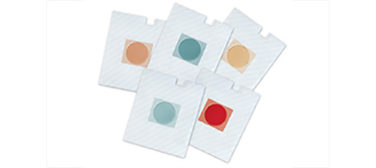Many pharmaceutical companies today are crossing over into the medical device world in one way or another, most frequently with diagnostics used to identify appropriate patients for particular pharmaceuticals, auto-injector devices used to administer their drugs or certain mobile apps, or software designed to aid patients or doctors. Whatever the path taken, once a company has successfully navigated the U.S. Food and Drug Administration’s (FDA’s) premarket requirements to bring a medical device to market and is ready to commercialize it, there are some important distinctions to understand between the FDA’s prescription (Rx) drug and medical device promotion rules.
Before unleashing your sales force on doctors’ offices, trade shows, or hospitals, be sure your sales and marketing teams understand the rules of the road for device advertising and promotion, including the key regulatory players and enforcement environment and, if they also promote your prescription drug products, the differences in promotional requirements.
The Shared Road
When looking to the core medical device promotion rules, there is a great deal of overlap with the FDA’s Rx drug promotion scheme, including:
- Truthful and non-misleading labeling, which broadly includes not only the immediate product labels themselves but anything accompanying the product.
- Presenting material information regarding use of the product, including product warnings, contraindications and product hazards (i.e., risk information).
- Labeling devices with the name and place of business of the manufacturer, packer or distributor: The net quantity of contents and the non-proprietary common or usual name for the device (e.g., medication reminder app).
- Detailing a device’s intended use (including a statement of identity on the principal panel of the device label), adequate directions for use and warnings in all device labeling.
- Labeling a product so that it is consistent with its intended use (i.e., no off-label claims).
In addition:
- Misleading statements and representations regarding another device, drug, food, or cosmetic can misbrand a device.
- The FDA regards non-branded and disease awareness-focused materials as non-promotional in nature and exempt from including adequate directions for use and risk information so long as the promotion does not, whether directly or indirectly, promote the device.
- Similar to over-the-counter (OTC) drugs, the U.S. Federal Trade Commission (FTC) oversees and regulates the advertising of OTC devices while the FDA regulates the advertising of Rx devices.
- The key players overseeing device promotion are similar as well, as the FDA, the FTC, and the leading medical device trade association (i.e., AdvaMed, the Advanced Medical Technology Association) almost exclusively control or influence current device promotion authorities and policy setting for future device promotion.
A Fork in the Road
While the list of similarities in regulating Rx drugs and medical device marketing is sizeable, the differences are significant as well. First, all Rx drug labeling and advertising materials must be submitted to the FDA at the time of initial publication or dissemination. However, device labeling and advertising materials are not required to be submitted to the FDA in the post-market phase. Nonetheless, companies marketing devices must be careful to ensure that device marketing claims do not trigger new premarket requirements (e.g., an additional clearance or approval of a device as a result of new marketing claims).
Also, prescription devices are required to bear a specific caution statement alerting the recipient that the device is for use on the order of a physician (or other professional). Moreover, some devices are subject to performance standards to which the devices must adhere and, in some instances, those require companies to include specific labeling statements.
Under the FDA’s unique device identification (UDI) mandates, which began implementation in 2014 for labelers of the highest risk devices (i.e., Class III), the labels of medical devices are required to include a serialized UDI number.
Further, the leading code of ethics is the AdvaMed Code of Ethics on Interactions with Health Care Professionals which is more permissive than the PhRMA Code (e.g., the PhRMA Code limits the venue for modest meals at company-sponsored promotional presentations to office or hospital settings; however, the AdvaMed Code is silent, allowing a broader set of venues for those meetings).
FDA Enforcement Actions
One of the greatest divides in device promotion versus Rx drug promotion is seen in the enforcement actions taken by the FDA each year, especially in recent years. For example, in 2015, the FDA’s Office of Prescription Drug Promotion (OPDP) issued only nine enforcement letters while seeming to focus more on guidance development for industry. In comparison, FDA’s device center appears to have issued more enforcement letters to device makers and marketers last year with a focus on devices lacking any approval or clearance or companies lacking a registration with the FDA despite marketing products that are devices.
That said, the FDA seems to worry more about the potential public health risks of false or misleading Rx drug product promotion. As evidence, the FDA established a Bad Ad Program, informally calling on healthcare professionals to self-report instances of false or imbalanced promotion of Rx drugs that they observe in their offices, and some of those reports have led to OPDP’s enforcement letters.
Finally, perhaps the biggest divide between device and Rx drug promotion is in the adherence by industry to the rules of the road. Despite a relatively small number of enforcement letters in recent years by OPDP, Rx drug companies (as a group) seem to make better strides at compliance with the FDA than device companies, many of whom still include zero risk information (i.e., “adequate warnings” and required “material” information under the FDA’s authorities) in device promotional materials.
As a result, there is an abundance of low-hanging fruit for enforcement of the device industry by the FDA, so Rx drug companies that are looking to make a foray into the medical device regulatory arena would be wise to first learn the rules of the road and then ensure their device promotion closely yields to those rules.






